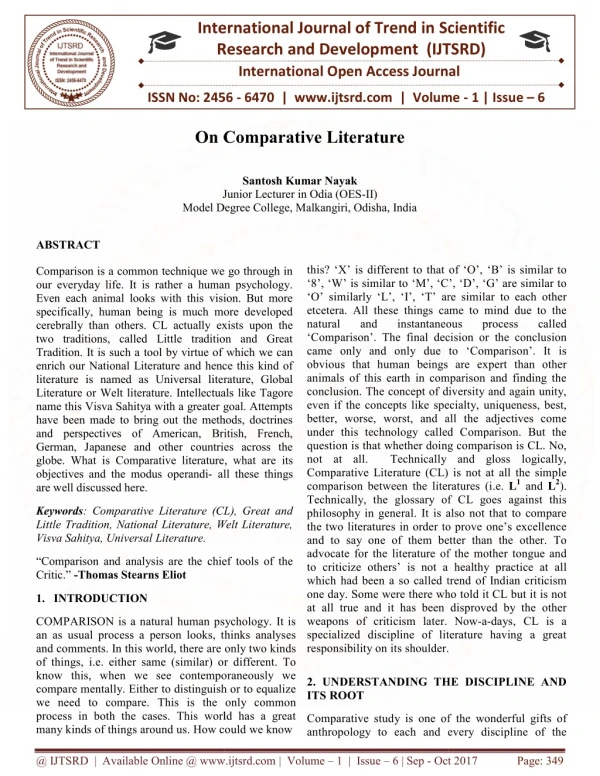Impact of Liberlisation in Rescent Years in India
The development of Indian economy was being strategically planned till 1980s, wherein import substitution was the basis, titling capital goods industries to have initial investments followed by chemical and durable consumer goods. The Industrial Development Regulation Act 1951 controlled comprehensively the dynamics of investments through licenses especially foreign exchange controls. In 1985, an effort was made by the Rajiv Gandhi administration, to rejuvenate industrial sector, through reforms altogether called as New Economic Plan, thereby removing requirement of license by incumbent firms and eased their entry. What is more, many classes of firms, for instance, those located in "underprivileged areas, have a barest minimum assets or which were "modernising. The monopoly houses were given relaxation, if their expansion listed as "priority industries. These initiatives lacked efficacy to encourage entry of incumbent firms, whose freedom to expand soared up. The probability of small sized incumbent firms gaining benefits, being unrestrained, was more than the other larger firms. The second phase was more profound including reforms like New Industrial policy 1991, wherein rules of investment licensing were lifted. Monopoly houses could easily expand and they were open to compete with reserved public sector. Trade tariffs plummeted and foreign direct investment were provided with simplified procedures. 340 percent, the maximum tariff on import dwindled to two fifths. The worthwhile drive of 1991 reforms was to let incumbent firms to experience both domestic and international competition, definitely paving way to increase in rivalry afterwards. The resourceful larger firms, having wide range of investments, were Competitively advantageous in these fiercer competition, Arguably, reforms in the mid 1980s were limited in scope and lacks clear roadmap, whilst those in 1990s were more systemic and systematic. In Pre liberalization phase, from independence till the mid Eighties, the economic planning was mainly based on a centrally operated market and under government control wholly. There were not any foreign investments coming and country lacked well established consumer market. This platitude the Indian economic condition, for instance living standard did not rise. In government tenure of Rajiv Gandhi, efforts were made to increase exports that is liberalisation policies were implemented but did not identified with much support. The imports, hence, exceeded exports and resulted into problems in Balance of Payment. What exacerbated the situation was the fall of the Soviet Union, which was used to be major business market of India. At this stage, the immediate economic reform was inevitable. There was in fact, China had previously adopted 'Open Door Policy' through which it liberalized its economy, pursuing export led growth and engaging more with global economy. Hence, in 1990s, Dr Manmohan Singh, the Finance Minister of India, took the first initiation towards globalisation and economic liberalization Urvashi Shivale "Impact of Liberlisation in Rescent Years in India" Published in International Journal of Trend in Scientific Research and Development (ijtsrd), ISSN: 2456-6470, Volume-2 | Issue-5 , August 2018, URL: https://www.ijtsrd.com/papers/ijtsrd17079.pdf Paper URL: http://www.ijtsrd.com/economics/classical-economics/17079/impact-of-liberlisation-in-rescent-years-in-india/urvashi-shivale
★
★
★
★
★
59 views • 4 slides

















